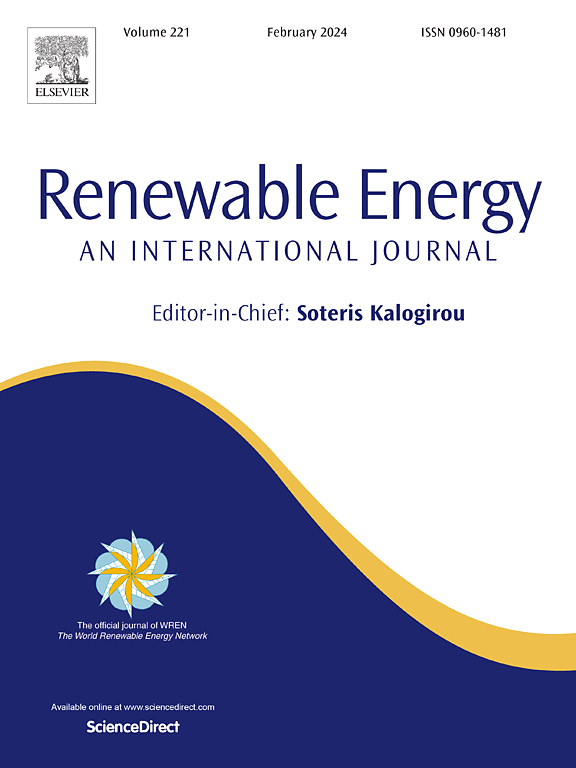Decentralized bilevel model for optimal planning of hybrid open points and integrated PV and energy storage systems considering diversified network coupling modes
IF 9
1区 工程技术
Q1 ENERGY & FUELS
引用次数: 0
Abstract
The hosting capacity can be effectively increased by configuring energy storages (ESs) in photovoltaic (PV) plants to form integrated PV and ES systems (IPVESSs). The diversified operation modes of hybrid open points (HOPs), which are devices consisting of a soft open point (SOP) and tie switch in parallel, can further increase the PV capacity. Therefore, this study proposes a coordinated planning method for HOPs and IPVESSs. A flexible distribution network (FDN) featuring the interconnection of tie lines and HOPs is designed, and four control modes of HOPs are also analyzed. The power model of HOPs is established in consideration of the power flow direction of the tie lines and SOP. Then, a bilevel optimization model of HOP and IPVESS planning is constructed. The capacity and location of HOPs and IPVESSs are determined by the distribution company and distributed energy resource aggregators, respectively. To solve the bilevel multiagent mixed-integer nonlinear programming problem, we further propose an analytical target cascading method embedded with strengthening convex relaxation. The case studies demonstrate that HOPs reduce the total cost of FDN by more than 18 %, and the proposed algorithm requires approximate five and nine iterations respectively to make the upper-level and the bilevel model converge.
考虑多种网络耦合模式的混合开放点和光伏储能一体化系统优化规划的分散双层模型
通过在光伏电站中配置储能系统(ESs),形成光伏与ES一体化系统(ipvess),可以有效提高主机容量。混合开点(HOPs)是由软开点(SOP)和并网开关组成的设备,其多样化的运行方式可以进一步增加光伏容量。因此,本研究提出了一种hop和ipvess的协调规划方法。设计了一种联络线与节点互联的柔性配电网(FDN),并分析了节点的四种控制方式。考虑并网线路的潮流方向和SOP,建立了各节点的功率模型。然后,建立了HOP和IPVESS规划的二层优化模型。HOPs和ipvess的容量和位置分别由分销公司和分布式能源聚合器确定。为了解决双层多智能体混合整数非线性规划问题,我们进一步提出了嵌入强化凸松弛的解析目标级联方法。实例研究表明,hop使FDN的总成本降低了18%以上,所提出的算法分别需要大约5次和9次迭代才能使上层模型和二层模型收敛。
本文章由计算机程序翻译,如有差异,请以英文原文为准。
求助全文
约1分钟内获得全文
求助全文
来源期刊

Renewable Energy
工程技术-能源与燃料
CiteScore
18.40
自引率
9.20%
发文量
1955
审稿时长
6.6 months
期刊介绍:
Renewable Energy journal is dedicated to advancing knowledge and disseminating insights on various topics and technologies within renewable energy systems and components. Our mission is to support researchers, engineers, economists, manufacturers, NGOs, associations, and societies in staying updated on new developments in their respective fields and applying alternative energy solutions to current practices.
As an international, multidisciplinary journal in renewable energy engineering and research, we strive to be a premier peer-reviewed platform and a trusted source of original research and reviews in the field of renewable energy. Join us in our endeavor to drive innovation and progress in sustainable energy solutions.
 求助内容:
求助内容: 应助结果提醒方式:
应助结果提醒方式:


